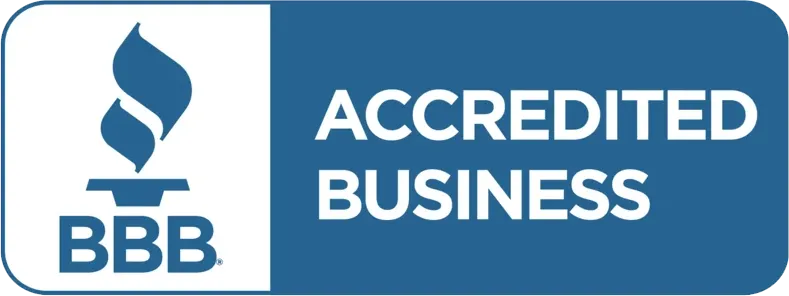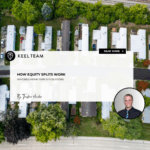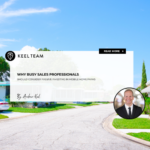How Mobile Home Parks Pivot in High Interest Rate Cycles
-
 Tristan Hunter - Investor Relations
Tristan Hunter - Investor Relations
Understanding high interest rate cycles can provide valuable insights for making more informed financial decisions. By analyzing historical trends, we can better predict future movements and leverage this knowledge to potentially profit, especially in the mobile home park business. Here’s a comprehensive guide on how to navigate the current U.S. interest rate cycle for potential financial gain.

Key Observations about Interest Rate Cycles
- Predictable Cycles: Interest rates typically follow predictable cycles, usually occurring every ten years.
- Economic Dynamics: Economic recessions generally lead to lower interest rates, while economic booms push them higher. However, external factors, such as Federal Reserve interventions, can influence these trends.
- Rate Changes: Increases in interest rates are often gradual, but declines can be rapid, similar to falling off a cliff. The 2007-2008 Great Recession exemplifies this swift reduction.
Current Economic and Political Climate
Signs of an Impending Recession
Several indicators suggest an impending economic recession. Rising unemployment rates, declining GDP, and weakening consumer sentiment all point toward economic downturns. Historically, the U.S. has experienced a recession approximately every eight years, and we are currently overdue.
The U.S. Debt Crisis
The U.S. government is grappling with a $35 trillion deficit. When interest rates were near zero (2009-2022), managing this debt was feasible. However, at current rates of around 5%, the interest payments on this debt consume nearly 50% of government income. This situation is unsustainable and necessitates a reduction in rates to avoid insolvency.
Political Pressure
The Federal Reserve faces political pressure to lower rates ahead of elections. High interest rate cycles negatively impact mortgage and car loan rates, which can hurt the current administration’s chances in the upcoming election.
Explore more with Keel Team! Download our FREE eBook on the “Top 20 Things I’ve Learned from Investing in Mobile Home Parks“
By Andrew Keel
Strategies for Mobile Home Park Investors
If interest rates are likely to decrease, investors in mobile home parks can take strategic steps to capitalize on this trend.
Step-by-Step Strategy
- Purchase at or Below Appraised Value: Secure a mobile home park at a fair or below-market price. You don’t need an extraordinary deal, just a reasonable one.
- Finance with Seller Carry or Conventional Loans: Utilize bank leverage to possibly enhance returns. Real estate investing typically benefits from the ability to secure debt.
- Await Interest Rate Declines: Monitor for expected rate reductions. Historical patterns suggest that once rates start to decline, they do so rapidly.
- Refinance or Sell at Peak Value: When rates hit their low point, refinance your property or sell it to potentially maximize profits.
Financial Modeling Example
To illustrate the potential financial gains, let’s use a simplified example:
- Purchase: Buy a mobile home park with a net income of $80,000 per year for $1,000,000 at an 8% cap rate. Finance it at an 8% interest rate.
- Financing: Put down 30% ($300,000) and secure a mortgage for $700,000, resulting in a debt coverage ratio of around 1.14. This means the property’s net operating income (NOI) is 1.14 times the annual debt service.
- Interest Rate Decline: Assume rates drop by 3 points to 5%.
- Cap Rate Adjustment: Cap rates decline to 6%.
- New Value: The mobile home park’s value increases to $1,333,333 at a 6% cap rate ($80,000 NOI / 0.06 cap rate). This yields a profit of $333,333 over the original purchase price, resulting in a substantial return on your initial investment.
Detailed Breakdown:
Initial Investment:
- Purchase Price: $1,000,000
- Down Payment (30%): $300,000
- Mortgage Amount: $700,000
Annual Debt Service:
- Assuming an 8% interest rate, the annual mortgage payment on $700,000 (interest only for simplicity) would be approximately $56,000.
Net Operating Income (NOI):
- NOI: $80,000
Debt Coverage Ratio:
- DCR = NOI / Annual Debt Service = $80,000 / $56,000 = 1.43
Interest Rate Decline:
- New Interest Rate: 5%
- New Annual Debt Service (interest only): $35,000
- New DCR = $80,000 / $35,000 = 2.29
Refinancing Impact:
- New Cap Rate: 6%
- New Property Value = NOI / New Cap Rate = $80,000 / 0.06 = $1,333,333
Profit:
- New Property Value: $1,333,333
- Original Purchase Price: $1,000,000
- Profit: $333,333

Risk Mitigation Strategies
While the primary strategy hinges on interest rate declines, you can likely hedge against risks through various methods:
- Raise Lot Rents: Mobile home park lot rents average around $300 per month. Given the high cost of single-family homes and apartment rents, lot rents could potentially triple and remain affordable.
- Fill Vacant Lots and Homes: Nationwide, mobile home parks average around 20% vacancy. Increasing occupancy by bringing in new or used mobile homes can help boost revenue.
- Eliminate Wasteful Spending: Address common inefficiencies such as fixing water leaks, optimizing manager compensation, and reducing overpayment for repairs and maintenance.
Conclusion
Investing in mobile home parks during an interest rate decline can be potentially profitable. By understanding and anticipating interest rate movements, you can make informed decisions that may lead to substantial financial gains. Always conduct thorough research and consider multiple strategies to help mitigate risks and potentially maximize returns. The intersection of economic trends and strategic real estate investing offers a unique opportunity to capitalize on the current U.S. interest rate cycle.
The potential for profit in mobile home parks lies in their unique position within the real estate market. Scarcity, combined with high demand for affordable housing, creates a favorable environment for investors. By carefully monitoring interest rates and making strategic investments, you can likely leverage these trends to your advantage. Remember, while the potential for profit is significant, it’s crucial to remain adaptable and responsive to changing market conditions to potentially maximize your returns.
Reach out to us below, learn more about investing in this asset class and how you can get started TODAY!
Learn more about mobile home park investing.
Interested in learning more about mobile home park investing? Get in touch with us today to find out more.
Disclaimer:
The information provided is for informational purposes only and is not investment advice or a guarantee of any kind. We do not guarantee profitability. Make investment decisions based on your own research and consult registered financial and legal professionals. We are not registered financial or legal professionals and do not provide personalized investment recommendations.

Tristan Hunter - Investor Relations
View The Previous or Next Post
Subscribe Below 👇





